July 2024
It is impossible to study the 19th Century without a good dousing of William Morris. Kelmscott Manor was one of two country estates owned by Morris.

Kelmscott Manor dates from around 1570 and has a late 17th-century wing. From 1871 until he died in 1896, it was the country home of the writer, designer, and socialist William Morris.
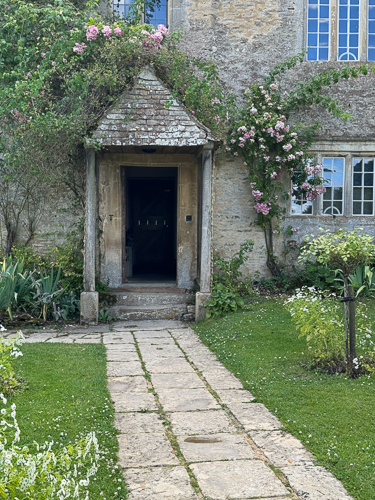
Morris drew great inspiration from the unspoiled authenticity of the house’s architecture and craftsmanship and its organic relationship with its setting, especially its garden. The Manor is featured in Morris’ work News from Nowhere. It also appears in the background of Water Willow, a portrait of his wife, Jane Morris, painted by Dante Gabriel Rossetti in 1871.
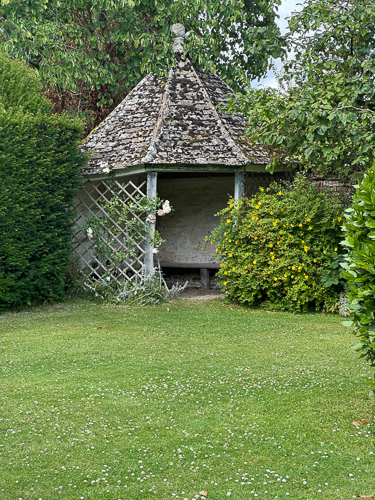
*
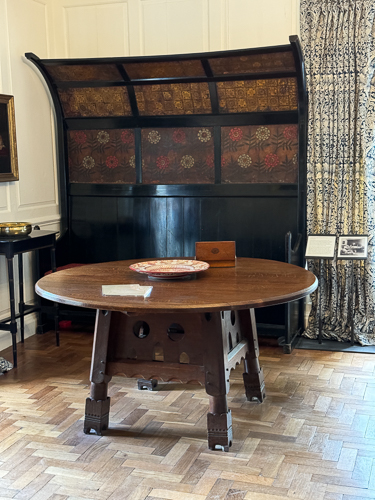
Medieval Settle and Table
This settle was designed by Philip Speakman Webb for Red House, where William Morris and his family lived between 1860 and 1865 and the home he moved into upon his marriage to Jane Burden-Morris. Webb was a close friend of Morris’s and a partner in Morris, Marshall, Faulkner & Co., for which he also designed glass, metalwork, and furniture. This settle is just one example of Webb’s originality and influence on the ‘Morris style’ of interior decoration. May Morris, William’s daughter, recorded that ‘the black settle with gilt and painted leather panels… was placed by the hospitable fireplace’ at Kelmscott House, giving us an idea of its prominence within the family home.
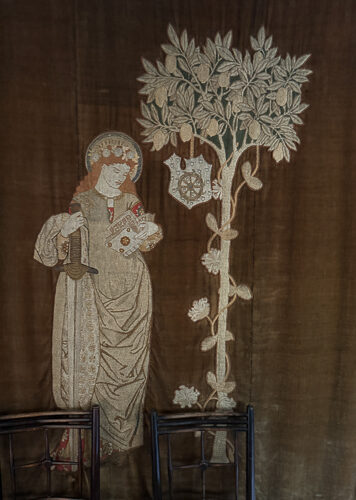
Another decorative feature of Red House and later Kelmscott Manor was the use of embroidered textiles as wall hangings. Designed by Morris, this representation of St Catherine is one of a set of figure panels inspired by classical sources and Geoffrey Chaucer’s poem The Legend of Good Women. The panels were intended to hang around the walls of the dining room at Red House. The scheme was never completed.
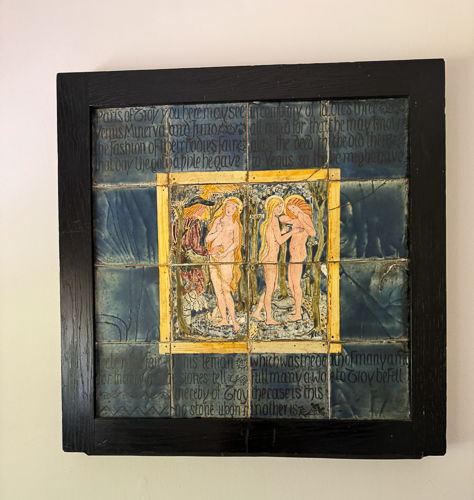
The Judgement of Paris was painted in the Red Lion Square workshops of Morris, Marshall, Faulkner & Co. by Edward Burne-Jones. Handpainted tiles were an important product of the Morris firm from its establishment in 1861 until the mid-1870s. Some were used as overmantels, but others, as in this case, were intended to be framed and displayed as pictures in their own right.

Morris loved these rare wall hangings mellowed by age, declaring that they gave the Tapestry Room ‘an air of romance which nothing else would quite do’. He gravitated there, using it as a workspace and a sitting room. Tapestries such as these inspired Morris to learn the technique himself.

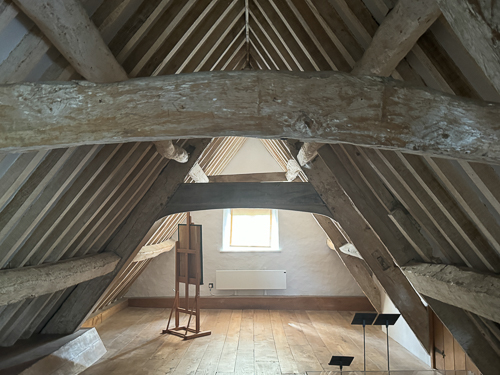
The Attic
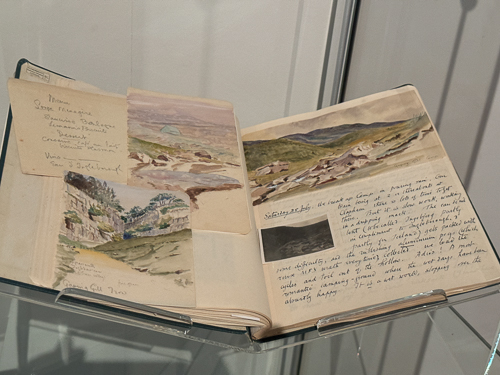
Morris’s journey to Iceland is wrapped up in the history of Kelmscott. He traveled to Iceland twice, once in 1871 and again in 1873. Morris and Rossetti had taken joint tenancy of Kelmscott just a few months before his first visit. An overriding reason for his trips was the strains in his marriage to Jane Morris in regard to her relationship with the painter Dante Gabriel Rossetti. Perhaps Morris felt that by leaving them in seclusion together, something that had been dragging on for long enough could lead to some kind of definite conclusion. Traveling with several other gentlemen to Iceland, Morris learned the language and explored the country.

After William Morris died in 1896, the Manor continued to be occupied by his widow, Jane Morris (who purchased it in 1913), and, later, his daughters. His daughter, May Morris, died in 1938 and bequeathed the house to Oxford University, the contents were preserved, and the public was granted access. The University was unwilling to preserve the house as a museum piece and passed the house and land to the Society of Antiquaries in 1962.
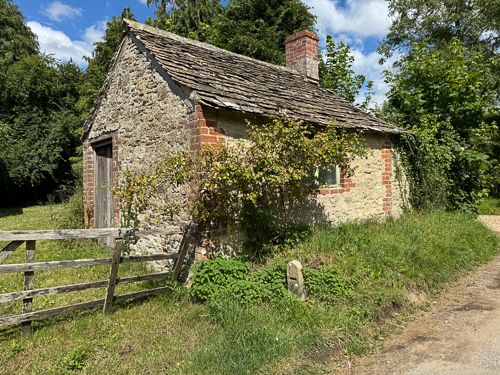
When Kelmscott Manor passed to the Society, it was in a precarious state of decay, and in the 1960s, work was done to ensure that the house did not deteriorate further. Most of the main roof beams were rotten, so much of the structure needed to be replaced. Internal walls and floors were strengthened, and a new porch was added to the North entrance. The associated barns were purchased by the Society in the 1970s and converted into a shop and tearoom.
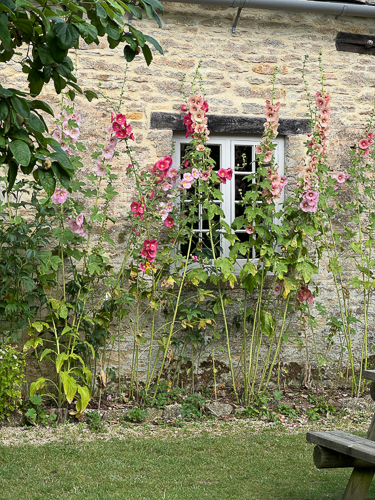
*
*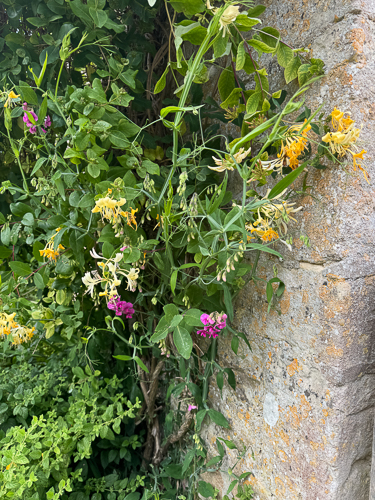
*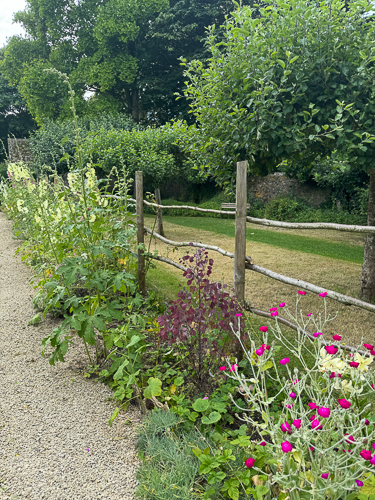
*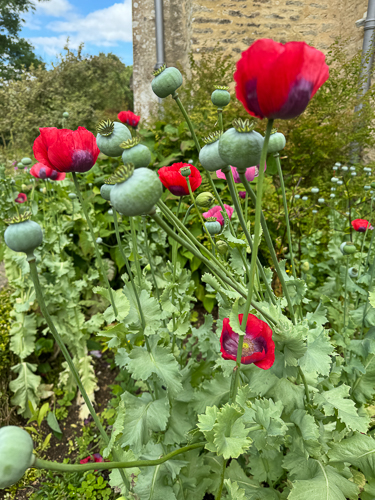
*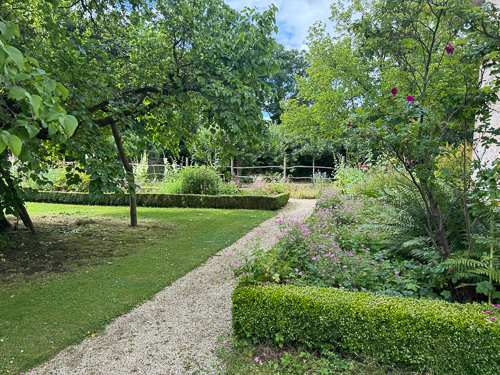
*
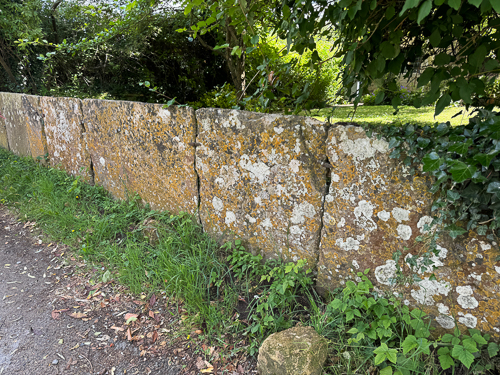
Slate walls on the roadway

*

From Right to Left: 1) Dante Gabriel Rossetti, 2) William Morris, 3) Frederick Startridge Ellis (1830-1901), Author and bookseller, 4) Philip Webb